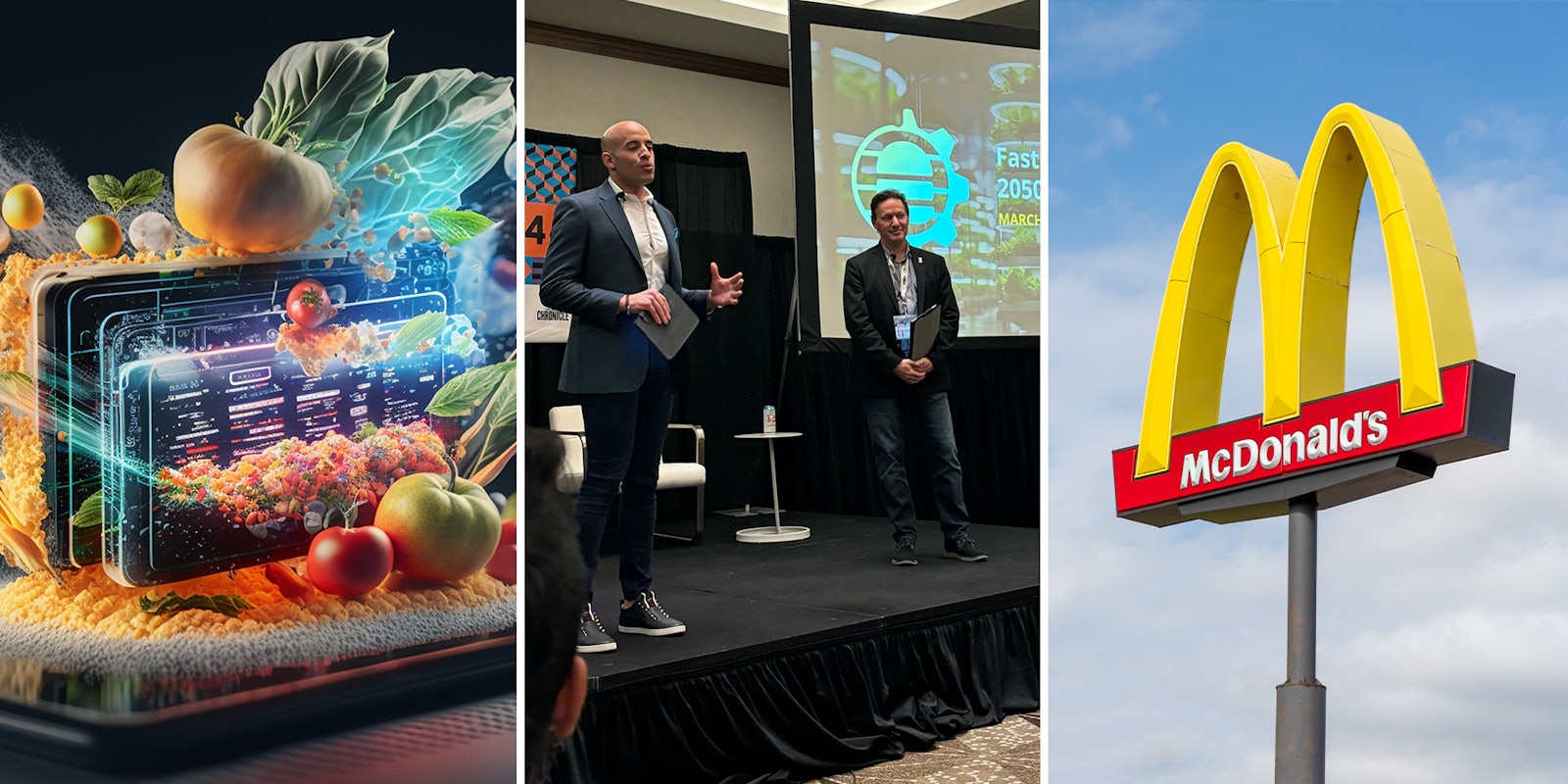Fast food has changed dramatically in the last few decades. Gone are super-sized meals and the standard burger-and-fries; instead, eager eaters are on the hunt for burrito bowls, vegetarian options, and varying blends of world cuisine—often delivered directly to their doors.
Given this shift, it’s clear that change is the only thing certain about the future of fast food. At this year’s South by Southwest (SXSW) festival, James Cascone of Deloitte Advisory LLP and PJ Rivera from Deloitte Consulting LLP took the stage to paint a picture of what eating out in the future might look like.
To frame the conversation, the duo offered two scenarios. The first was dystopian, an idea that they dubbed “Hunger Games”; the second was “Sustainable Abundance,” where local farming and eco-friendly food development allowed people to survive and thrive. The latter, they say, is the goal toward which the food industry should reach.
In order to get there, Rivera declared that there were two main considerations: food production and distribution and consumer preference.
Food production, Rivera says, always poses issues. Livestock requires hefty investments of energy to breed and grow, and as the population expands, more food will need to be produced or better allocated in order to meet the rising demand.
That said, there is hope in this area—and it comes in part in the form of expanding our understanding of food.
“Fifteen vegetables are about 90% of what goes into our body,” Rivera observed. “Out of those 15, 3 account for about 60% of your caloric intake.”
Rivera noted that there are an estimated 50,000 species of edible plants across the globe. Figuring out how to use these plants, he says, may provide a key in understanding what the food of the future might look like.
For example, these plants could be used to create something that resembles a meal one can currently get at a fast-food chain today, only with some key differences. To that end, the presenters showed a potential burger-and-fry meal of the future—where the bun is made with native grains, the patty made from a lab-grown alternative, and the fries replaced with a “vertically farmed side salad.”
However, this brought the presenters to the next topic: cost. Right now, although the presenters claimed that a quarter of consumers are willing to pay more for sustainable products, the rising price of goods across industries has led many to be careful about how much they are spending on groceries. These considerations, the duo said, will need to be integral to the future fast food, alongside food quality and convenience.
As far as what specific foods will be the objects of desire in the future, no one is sure. The duo offered items like seaweed wraps and a “3D-printed micronutrient bar” as possible options; the growth of these areas will depend on not only personal preferences of consumers and the development of new food areas, but on new technology as well.
“Generative A.I. is becoming increasingly more important in the food industry,” stated Cascone, adding that it will take a “bigger and bigger role” in the future of fast food. Specifically, Cascone noted that the areas of solving sustainability problems and meeting consumer preferences could be benefited by the use and development of Generative A.I.
To actually get there, though, the duo stressed the need for government investment and cooperation—and solving other issues like water usage.
“It’s a major, major issue in agriculture, and it needs to be addressed,” said Cascone.



